Few instruments captivate the heart like the handpan. Its warm, resonant tones can make time feel suspended, and its circular shape feels as if it was designed to fit the universe into your lap.
But here’s the truth:
“The handpan doesn’t need you to be a virtuoso. It asks only for your presence.” — Manu Delago (renowned handpan player)
Whether you are a complete beginner or an aspiring professional, the journey to mastering the handpan can be as transformative as the music itself.
This blog will break down the best way to learn the handpan, from the first notes to advanced artistry.
Why Choose the Handpan?
Before we jump into methods, let’s understand why this instrument is worth learning:
-
Intuitive to play: You don’t need years of formal training to create soothing melodies.
-
Portable and unique: Unlike a piano or drum kit, a handpan fits anywhere and is conversation-starting.
-
Healing power: Many use handpans for meditation, sound healing, and personal therapy.
-
Growing community: Festivals, workshops, and online groups are thriving worldwide.

Step 1: Choosing the Right Handpan
Your journey begins with the right instrument.
Key Factors to Consider:
-
Scale:D Minor scales are popular for beginners. Common variations of D Minor include ‘D Kurd’ and ‘D Celtic’
-
Number of Notes: 8–9 notes are easier to start with, while additional notes on the top and bottom of the instrument can offer more flexibility of expression.
-
Material: Nitrided steel vs stainless steel — stainless resists rust better and sounds cleaner while nitrided steel has a more percussive sound that's suited for faster playing styles
-
Budget: Expect to pay between $1,500–$4,000 for a good quality handpan.
Quick Comparison Table:
|
Feature |
Beginner Friendly |
Advanced Players |
Price Range |
|
8–9 Note Scale |
✅ Yes |
Limited Range |
$1,500–$2,000 |
|
10+ Note Scales |
Moderate |
✅ Flexible |
$1,800–$4,000 |
|
Stainless Steel |
✅ Durable |
✅ Clear Tones |
Slightly higher |
|
Nitrided Steel |
Warm tones |
May rust faster |
Budget-friendly |
Step 2: Building a Strong Foundation
Learning the handpan isn’t about rushing into complex rhythms. Start with basics.
Beginner Practices:
-
Posture: Sit comfortably with the handpan tilted slightly toward you.
-
Striking Technique: Use fingertips, not nails or palms. Gentle taps create resonance.
-
Breath & Rhythm: Sync your breathing with your playing to find flow.
-
Simple Patterns: Start with two-note alternations before attempting chords.
“The handpan rewards simplicity. Even one note, played with presence, can touch the soul.” — David Kuckhermann
Step 3: Self-Learning vs Formal Training
Which is the best way to learn? The answer depends on your goals.
Self-Learning
-
✅ Affordable (YouTube, online courses, eBooks).
-
✅ Flexible pace.
-
❌ Risk of creating bad habits without correction.
Formal Training (Workshops, Private Lessons)
-
✅ Personalized guidance.
-
✅ Faster skill development.
-
❌ Can become costly compared to free resources.
|
Option |
Best For |
Average Cost |
|
YouTube Tutorials |
Hobbyists, casual learners |
Free |
|
Online Courses |
Structured, flexible learners |
$50–$300 |
|
Workshops/Retreats |
Deep immersion, networking |
$300–$1,000+ |
|
Private Lessons |
Tailored growth, professionals |
$50–$100/hr |
Step 4: Practice Framework (The 20-Minute Rule)
Consistency beats intensity.
-
5 min → Warm-up (single note strikes).
-
5 min → Scales & patterns.
-
5 min → Improvisation (let creativity flow).
-
5 min → Reflection/recording.
Tip: Record your sessions. Reviewing helps you catch mistakes and track progress.
Step 5: Expanding Musicality
Once basics feel natural, add depth:
-
Chord exploration: Play triads and progressions.
-
Rhythmic layers: Combine hands in polyrhythms.
-
Dynamics: Vary between soft, meditative tones and louder accents.
-
Collaborations: Jam with guitarists, flutists, or percussionists.
“Collaboration opens new doors. The handpan shines brightest when it converses with other instruments.” — Hang Massive
Step 6: Using Technology to Learn
Modern learners can accelerate growth with tools:
-
Tuner Apps (to check pitch stability).
-
Metronome Apps (Rhythm Trainer, Soundbrenner).
-
Looping Devices (Boss RC-505 for layering).
-
Video Journaling (compare week-by-week progress).
Step 7: Joining a Handpan Community
Learning alone can be rewarding, but community elevates your journey.
-
Facebook groups & forums: Share progress, ask questions.
-
Festivals: Paniverse, Pantasia, Handpan Gatherings. (Embed a link to the ‘Lighthouse Handpan Gathering’ landing page)
- Local meetups: Check for drum circles or sound healing sessions.
Step 8: The Role of Mindset & Flow
Mastery is not about speed or flashy playing. It’s about presence.
-
Patience: Progress may feel slow. That’s normal.
-
Mindfulness: Use handpan as a meditation tool.
-
Play for joy: Don’t only aim for performance perfection.
The Science of Sound Healing with Handpan
Many are drawn to the handpan because of its healing resonance. Studies in sound therapy suggest that low-frequency vibrations reduce stress, lower heart rate, and enhance focus.
The handpan’s harmonic overtones make it especially powerful in yoga, meditation, and trauma recovery settings. If you’re learning, remember—you’re not only developing a musical skill but also cultivating a tool that can help others find balance and calm.
(Embed link to weekly Sound Bath at Midnight Wellness)
Handpan vs Traditional Percussion: What’s Different?
Unlike a drum, which relies on rhythmic impact, the handpan blends percussion with melody. This hybrid nature is why it’s often described as both a drum and a harp in one.
Traditional percussion demands strict rhythm, while the handpan allows free-flow improvisation. For learners, this means less pressure and more freedom. You don’t need to count beats perfectly to sound good—you just need to flow.
Setting Goals: From Hobbyist to Performer
Before you dive too deep, ask yourself—what do I want from the handpan? Some play for relaxation after work, others aim to perform at festivals or record music. Setting goals shapes your learning path.
Hobbyists may thrive on self-learning and jam sessions, while performers benefit from structured lessons, stage practice, and recording techniques. Both paths are valid; clarity keeps you motivated.

Advanced Level: From Player to Performer
When you’ve built confidence:
-
Compose Original Pieces: Start writing your own music.
-
Use Multiple Handpans: Experiment with different scales.
-
Live Performance: Play at local cafes, yoga sessions, or online streams.
-
Recording & Sharing: Upload tracks to YouTube, Spotify, or SoundCloud.
Common Mistakes to Avoid
-
Striking too hard (causes buzzing & damages notes).
-
Neglecting rhythm in favor of melody.
-
Skipping fundamentals and chasing complexity.
-
Buying a cheap, poorly tuned handpan.
FAQs
Q1. How long does it take to learn the handpan?
With regular practice (20 minutes daily), you can play simple songs in 1–2 months and build strong fluency in 6–12 months.
Q2. Can I learn handpan without prior music experience?
Yes. The handpan is intuitive and beginner-friendly. Even non-musicians find joy quickly.
Q3. Do I need sheet music?
No. Most players learn through patterns, improvisation, and listening. Tablature exists but isn’t mandatory.
Q4. What’s the best handpan for beginners?
Scales like D Kurd or C Ashakiran are versatile, forgiving, and widely recommended.
Q5. How do I maintain my handpan?
Keep it in a padded case, wipe after playing, avoid moisture, and oil lightly once a month.
Conclusion: Your Path to Mastery
Learning the handpan isn’t just about music—it’s about presence, healing, and community.
-
Start with the right instrument.
-
Build foundations with patience.
-
Learn through a mix of self-study and guided lessons.
-
Use community and technology as accelerators.
-
Above all, play with joy.
“The journey matters more than the destination. Each note you play is already music.” – Unknown
Your path to mastery begins with the first strike. Pick up your handpan, breathe deeply, and let the sound guide you forward.




